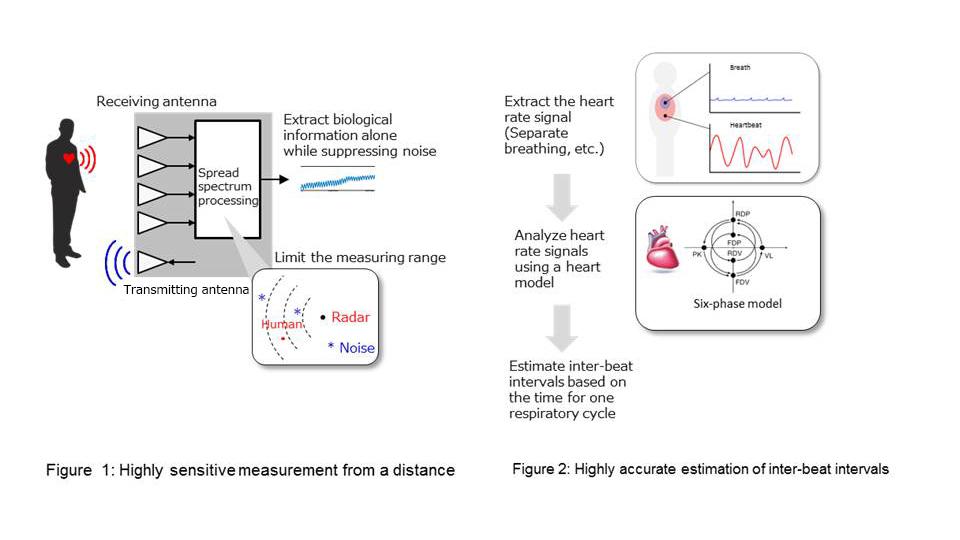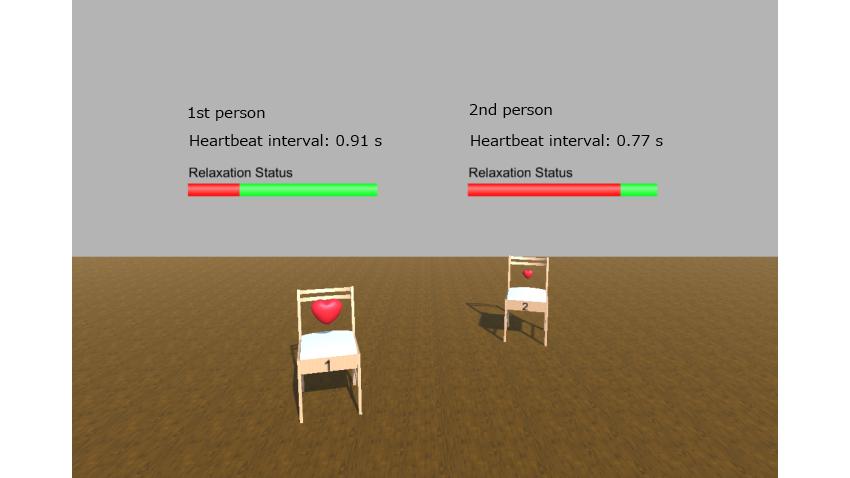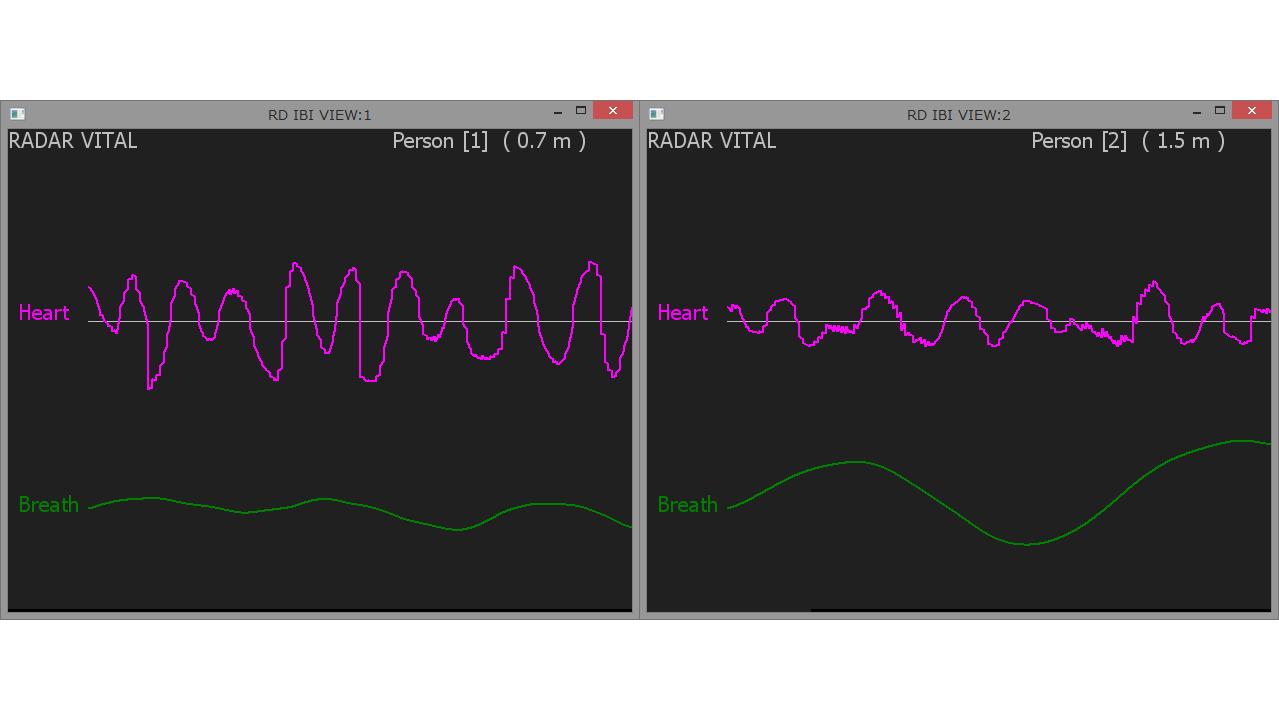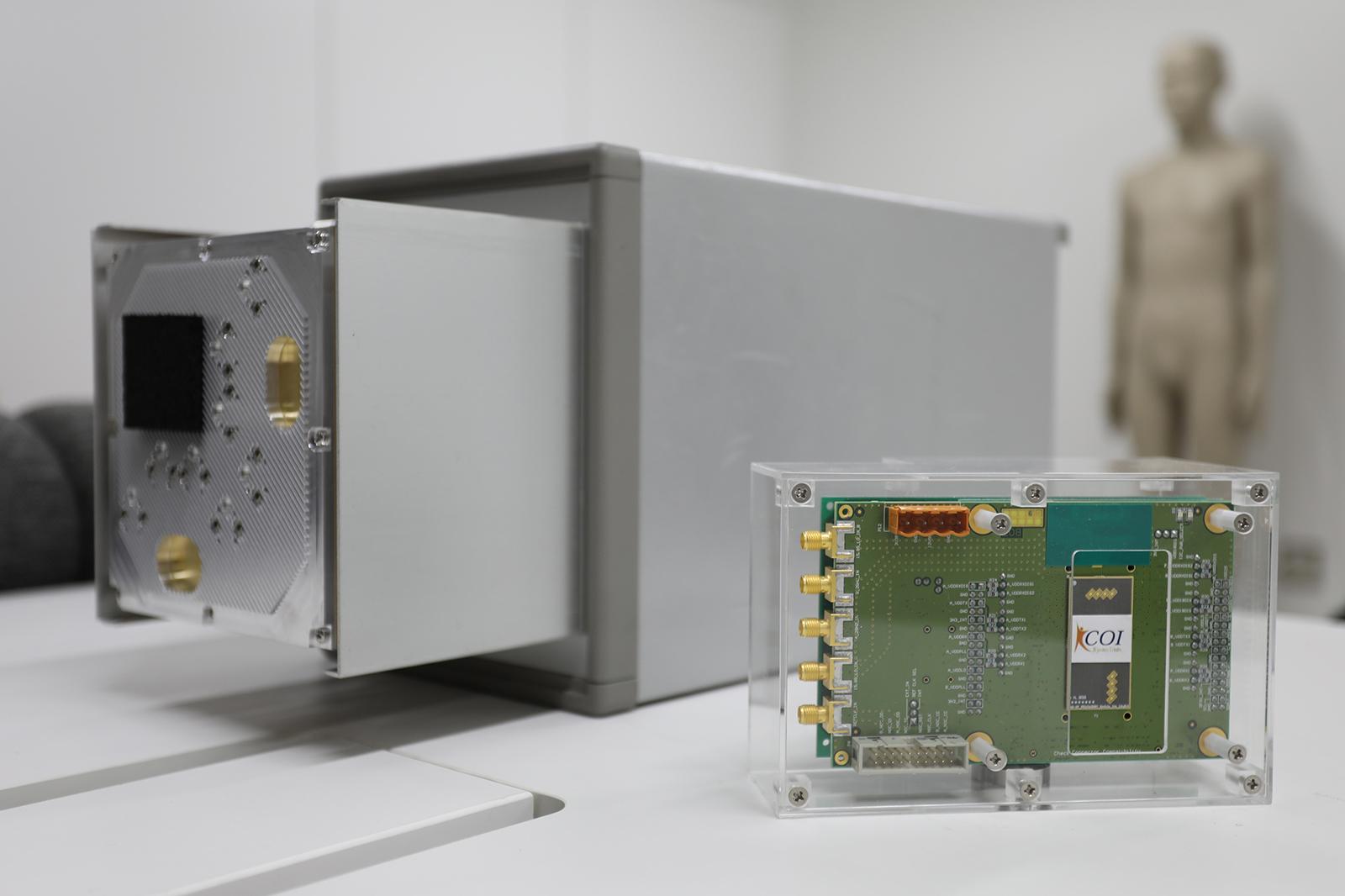
The device that was developed last year to provide wireless measurement of vital signs such as respiration and heartbeat has been downsized and further advanced. Improvements include the use of a wider 79-GHz frequency band; improved measurement sensitivity by integrating CMOS semiconductors into a single chip for millimeter-wave radar; increased sensitivity with finer resolution in the distance direction of the measurement range; and precise separation of the noise that would otherwise affect the estimation accuracy of the heartbeat interval in order to simultaneously measure the heartbeat intervals of several people with a single radar.
How am I feeling? Ask my house
Kyoto and Osaka, Japan - In early 2016, researchers from Kyoto University's Center of Innovation and Panasonic Corporation developed a radar-based device that could instantaneously and accurately measure the body's vital signals -- and now they've made it even better.
The sensor combined a radar with signal analysis algorithms to measure how the body moves as the heart beats. Body movements vary considerably, so the software filters isolate just the heart's minute motions.
"Measuring respiration and heart rate -- without attaching cumbersome wires to the body -- will greatly benefit modern medicine and home healthcare," explains Toru Sato, lead researcher and Kyoto University professor of communications and computer engineering.
"Moreover, it will reduce stress by not subjecting the individual to a feeling of being monitored."
While the original technology showed promise, there was a major problem: the prototype was the size of a microwave oven. To improve prospects for implementation, the group shifted their focus toward refining the device.
"After extensive testing we achieved great improvements," continues Sato. "The device now utilizes the 79 GHz frequency band, instead of the previous 60 GHz. We also incorporated CMOS semiconductors. As a result, range and resolution improved, and it's now only about one tenth the size -- as big as a smoke detector."
Moreover, because of the new frequency band, the sensor can now measure the heart rates of multiple individuals in the same room, separated by as little as 7.5 cm (about 3 inches).
The heartbeat intervals of several people can be simultaneously measured in real-time
The team hopes that the improved specs will allow such sensors to be installed in a variety of household appliances -- such as lighting -- to safely monitor the vitals of residents.
"This technology holds great promise for the future development of devices to monitor health remotely," concludes Sato. "We are currently considering test sites for observing the multiple applications of our sensor."
About Kyoto University
Kyoto University is one of Japan and Asia's premier research institutions, founded in 1897 and responsible for producing numerous Nobel laureates and winners of other prestigious international prizes. A broad curriculum across the arts and sciences at both undergraduate and graduate levels is complemented by numerous research centers, as well as facilities and offices around Japan and the world. For more information please see: http://www.kyoto-u.ac.jp/en.
- Disclaimer:
- We would like to note that Panasonic Newsroom is not a place to address personal Customer Service issues. Even though this is not the forum, Panasonic is always eager to resolve your concerns. Our local customer services contacts can be found at Global Support or you can see our list of Social Media Accounts to find the right channel for your queries and concerns.
Related Links
Photos
The heartbeat intervals of several people can be simultaneously measured in real-time











